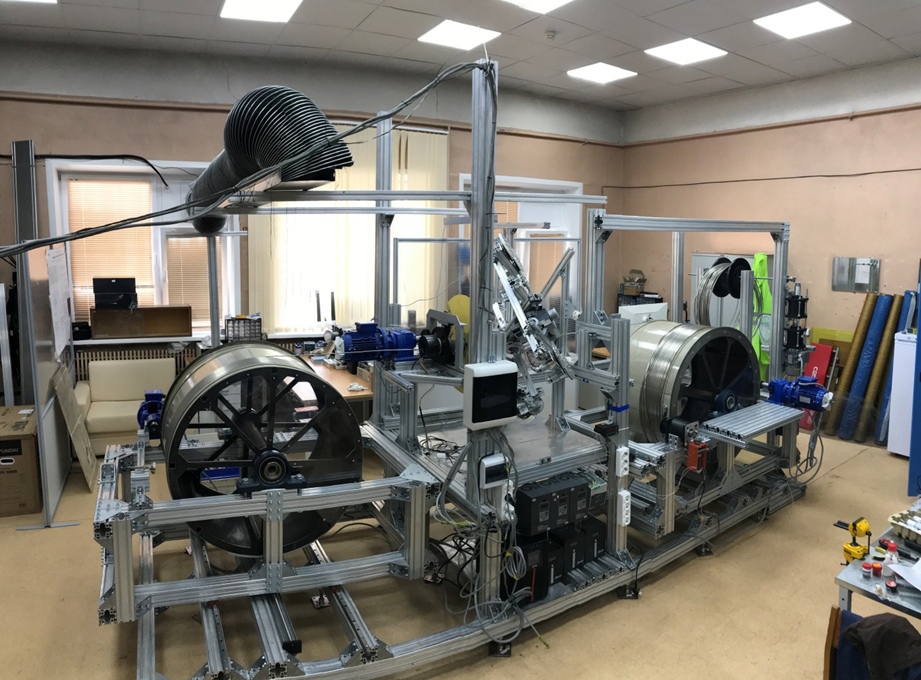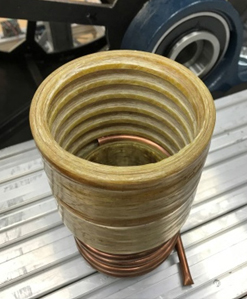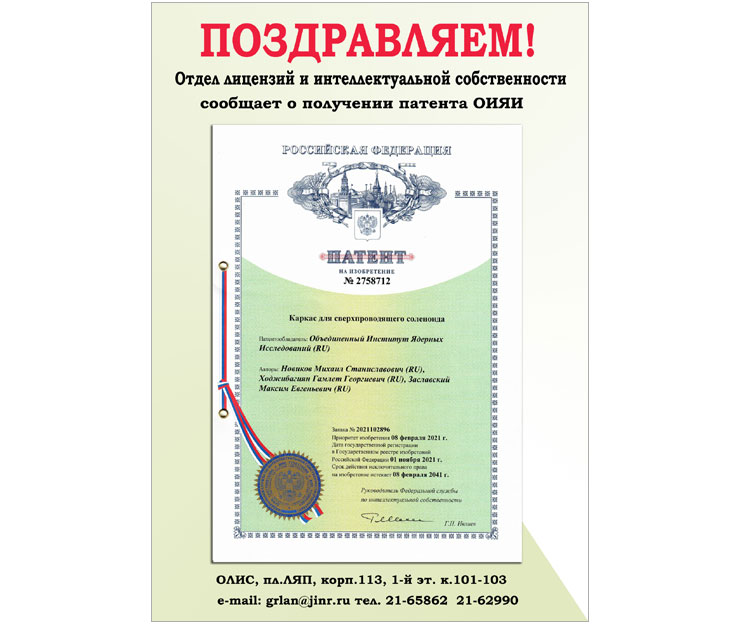New technological solution for NICA
Patents, 23 December 2021
Implementation of the NICA megascience accelerator complex is underway in the Laboratory of High Energy Physics JINR. The future collider will have no analogues in the world, so many of its engineering solutions should also be unique and oriented at the problems of modern science.
In particular, a power system for particle accelerators of the NICA complex, namely the Booster and the Nuclotron, is under development. It has superconducting magnetic energy storage (SMES), which is scheduled to be put into operation in 2023. A Russian patent for the invention has been obtained this year for the construction of a dielectric frame of the pulsed high-current superconducting solenoid. The authors of the patent are a senior researcher of the Group of New Magnetic Technologies Based on High-Temperature Superconductivity of the Scientific and Experimental Department of Superconducting Magnets and Technologies, VBLHEP JINR, Mikhail Novikov, VBLHEP Deputy Director Hamlet Khodzhibagiyan, and a researcher of the Group Maxim Zaslavsky.
 Experimental winding facility of HTSC cable
Experimental winding facility of HTSC cable
The new invention will be used at the SMES magnet for the power system of the Booster and the Nuclotron of the NICA accelerator complex. The magnet will be a solenoid of one metre in diameter and height, with a pulse current of several kiloamps, with a maximum field on the winding of about 6 Tesla, a 30 K operating temperature with the cooling by boiling neon flowing through the channel in the superconducting cable made of high-temperature superconducting tapes. The solenoid itself is yet to be created by the group of scientists and engineers. Requirements for the solenoid’s frame are fairly high. It should be dielectric not to induce eddy currents. The frame should also withstand cryogenic temperatures and considerable ponderomotive forces in the cycling pulsed mode, many millions of cycles.
 Dozens of cases of the frame of the solenoid’s sections (layers), which are coaxial pipes of different diameters, will be made of fibreglass with an epoxy binder adapted to low temperatures. The fibreglass threads will overlap, mainly along the circumference and partially in parallel to the solenoid’s axis, in the direction of the main forces in the winding. It will ensure that the maximum strength prevents the rupture of the ring of the frame by tangential stresses.
Dozens of cases of the frame of the solenoid’s sections (layers), which are coaxial pipes of different diameters, will be made of fibreglass with an epoxy binder adapted to low temperatures. The fibreglass threads will overlap, mainly along the circumference and partially in parallel to the solenoid’s axis, in the direction of the main forces in the winding. It will ensure that the maximum strength prevents the rupture of the ring of the frame by tangential stresses.
“There will be a groove carved on the smallest frame. The high-temperature superconducting round cable is wound on it. It serves as a carving for an external, banding, frame of a larger size. On top of this structure, the next-sized pipe with a carving made from the inside is screwed on. So, external frames are wound on the cable winding as a nut,” a co-author of the invention Mikhail Novikov highlighted.
Cables are of a nuclotron type made of niobium-titanic strands. However, conductors are not wires but tapes. During their manufacture, several buffer layers are applied to a 30-40 micron substrate using several ion sources operating in a high vacuum. Then, also in a vacuum, a layer of ceramics is sprayed with a laser, on top of which a magnetron sputtering with silver is applied. Only about 10 companies produce such HTSC tapes. The cable made of them – for SMES and some other types of accelerator magnets – are produced at the VBLHEP JINR Department.
An epoxy, cryogenically stable compound is used as a binder. A heat-insulating vacuum will be created around the solenoid. “We have already ordered a similar frame and will soon be winding a 5 Tesla magnet from an HTSC cable – a pulsed solenoid for the methodology of studying losses and stability of superconductors following the same principle,” Mikhail Novikov said.
The new construction can be applied not only at NICA. In practice, it is quite laborious to make it due to the necessity to carve the exact threads on the frame’s parts. The construction allows using the section of fibreglass more fully compared to other options because every next section holds the previous one. The invention also makes it possible to cool solenoid more efficiently.
The Group of New Magnetic Technologies Based on High-Temperature Superconductivity of VBLHEP is working further on improving the design and technology of frames, as well as plans to apply for a patent with its other developments. The next patent will be related to the HTSC cable facility and the HTSC cable construction for accelerator magnets.
The set of the major tasks of the Group includes the creation of the solenoid for the SMES energy storage of the Booster and the Nuclotron power system, participation in the development of magnets made of the HTSC cable for the modernisation of the Nuclotron accelerator, as well as the development of the HTSC winding for the medical superconducting cyclotron SC-230 being created within the JINR International Innovation Centre.
